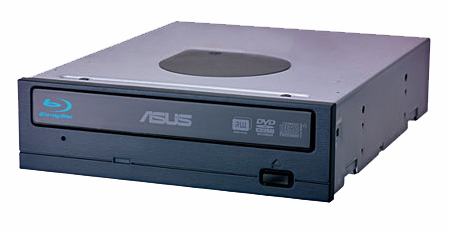Storage
I network our household computers through a home-built server unit that features 4TB of storage capacity so I have not been that concerned about disk space on the local machines. However, after a total meltdown with Windows Home Server earlier this year, I have become a bit more interested in keeping backups of critical files on the local machines, plus game and application installations are multi-gigabyte affairs now. Windows Server 2008 has replaced WHS and an upgrade to 8TB is coming online after Computex, so the network storage requirements are set for the near future.
I have always favored a fast hard disk on the local machine and the 150GB WD Raptor has been my favorite drive the past couple of years. However, after looking for the best balance of price, performance, and storage, one drive stood out from all others - so much so that the majority of my home machines are now sporting the Western Digital Caviar SE16 640GB hard drive. At $99 it is pretty much a no brainer purchase if you are looking for a new hard drive on the desktop. The WD SE16 640GB is one of those drives that offers a near perfect blend of capacity, performance, acoustics, and thermals at an incredible price point. The one exception I have is in my HT machine that utilizes a couple of the Seagate DB35.3 750GB drives dedicated to video recording activities.
Considering my daughter's machine will need to perform BD (Blu-ray Disc) playback at various times plus the need for the standard DVD burning activities, I decided to get a BD combo drive for her. Another pressing need for a combo drive stems from the SG03 case only having a single 5.25" external slot. I already have the LG GGW-H20L drive in my HT machine and just recently traded a couple of ATI 2900XTX cards for the LG GGC-H20L drive that is seeing duty in the server now.

Yes, I can stream HD video through the network so I do not truly need a combo drive, but my daughter's friends like to bring over BD discs and it is just easier for me to let them play the titles locally. The LG GGC-H20L would be the logical choice as we still have several HD-DVD titles (about 45 or so - thanks Toshiba) but even the very reasonable street price of around $170 is out of reach thanks to my earlier budget busting activities. We utilize the Sony BDU-X10S drives in our test beds and it is a terrific drive. Once again, the average street price is around $170, putting it just out of reach for us, as I needed to purchase a standard DVD drive for my machine. One would think I would have something in the closet of lost dreams, but for whatever reason I tend to be hard on optical drives and actually have several that need to be disposed of shortly.
I ended up getting the ASUS BC-1205PT drive for $150. After a firmware update, this drive has actually impressed me and BD playback is flawless even with the BD-R DL playback locked at 2x. Seek times seem to be a little high to me compared to the LG and Sony drives while overburns are limited along with the inability to set book type on DVD+R or DVD+RW media. Overall, write quality is very good and that was my major concern. Of course, it is a SATA drive so cable management is a big plus in our cramped case. The LITE-ON DH-401S-11 drive was available at $130, but the last one I bought did not last very long. Those things happen, but I did not want to go down that path again.
I did not hesitate in purchasing the Pioneer DVR-215D 20x DVD-R/+R drive for my system. Fortunately, I got the black OEM version for $27 on sale; otherwise, my next choice would have been the Samsung SH-S203N or the new Samsung SH-S223F drive. One thing I have learned as of late is the need for a multi-card reader what with everyone in the household having various camera and camcorder formats, so it was about time to purchase a couple of additional units. I was able to snag two Transcend M3 units at a local store for $9.99 each - a heck of a deal on a top-flight unit.










33 Comments
View All Comments
JarredWalton - Wednesday, May 28, 2008 - link
You might want to do a bit more http://en.wikipedia.org/wiki/MicroATX">research. Just as all ATX boards aren't identical in size, there is some leeway in how big a micro-ATX board can be. Maximum size is 9.6" x 9.6", but they can be much smaller than that as well.While the correct abbreviation is µATX, mATX and uATX are synonyms that are equally valid in our modern PC vernacular. (Gasp! You mean Newegg is wrong!? Yup. It happens. Or you could consider it a mere difference of opinion, where Newegg is trying to redefine uATX to mean something other than mATX.)
DXRick - Thursday, May 29, 2008 - link
Thanks. Sorry for being stupid.FireTech - Tuesday, May 27, 2008 - link
A very interesting 'article' Gary, with insight into the world of a reviewer but nicely balanced with the requirements of the typical cash conscious geek/husband/parent!I'm certainly looking forward to part two.